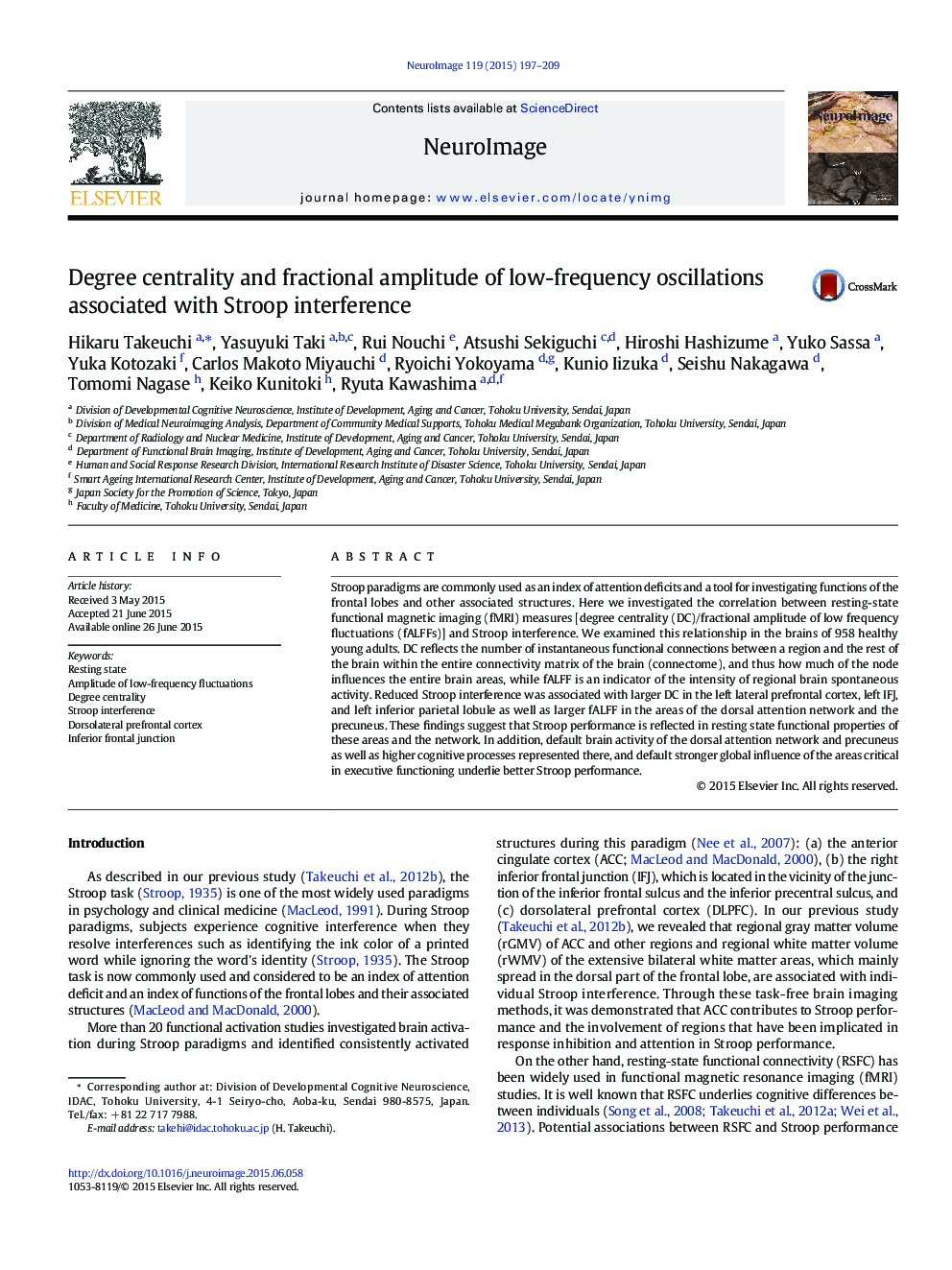| Article ID | Journal | Published Year | Pages | File Type |
|---|---|---|---|---|
| 6024818 | NeuroImage | 2015 | 13 Pages |
Abstract
Stroop paradigms are commonly used as an index of attention deficits and a tool for investigating functions of the frontal lobes and other associated structures. Here we investigated the correlation between resting-state functional magnetic imaging (fMRI) measures [degree centrality (DC)/fractional amplitude of low frequency fluctuations (fALFFs)] and Stroop interference. We examined this relationship in the brains of 958 healthy young adults. DC reflects the number of instantaneous functional connections between a region and the rest of the brain within the entire connectivity matrix of the brain (connectome), and thus how much of the node influences the entire brain areas, while fALFF is an indicator of the intensity of regional brain spontaneous activity. Reduced Stroop interference was associated with larger DC in the left lateral prefrontal cortex, left IFJ, and left inferior parietal lobule as well as larger fALFF in the areas of the dorsal attention network and the precuneus. These findings suggest that Stroop performance is reflected in resting state functional properties of these areas and the network. In addition, default brain activity of the dorsal attention network and precuneus as well as higher cognitive processes represented there, and default stronger global influence of the areas critical in executive functioning underlie better Stroop performance.
Keywords
Related Topics
Life Sciences
Neuroscience
Cognitive Neuroscience
Authors
Hikaru Takeuchi, Yasuyuki Taki, Rui Nouchi, Atsushi Sekiguchi, Hiroshi Hashizume, Yuko Sassa, Yuka Kotozaki, Carlos Makoto Miyauchi, Ryoichi Yokoyama, Kunio Iizuka, Seishu Nakagawa, Tomomi Nagase, Keiko Kunitoki, Ryuta Kawashima,
